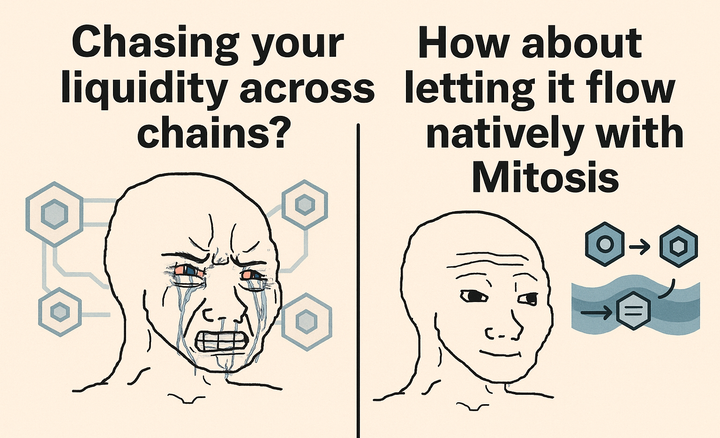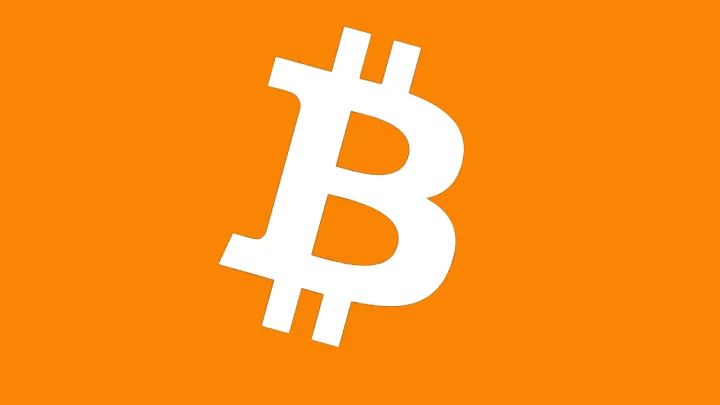Improve DeFi Accessibility: How Mitosis Should Leverage an Abstract SDK App to Onboard Mainstream Users

Abstract
Decentralized Finance (DeFi) on Ethereum’s Layer 2 (L2) ecosystems offers scalability, cost-efficiency, and high-yield opportunities, yet its complexity hinders adoption by mainstream users.
Mitosis, an innovative Layer 1 blockchain focused on Ecosystem-Owned Liquidity (EOL), is uniquely positioned to address this challenge.
This article proposes that Mitosis develop an application with an Abstract Software Development Kit (SDK) to simplify onboarding for non-technical individuals into Ethereum L2 DeFi. By integrating ready-to-use liquidity packages and leveraging Matrix Vaults for yields ranging from 10-15% Annual Percentage Yield (APY) on Ethereum-based assets, Mitosis can democratize access to DeFi.
The strategic alignment of Abstract’s user-friendly abstraction with Mitosis’ programmable liquidity framework could catalyze widespread adoption, positioning both entities as leaders in the next phase of decentralized finance.
Introduction
Decentralized Finance has redefined financial systems by enabling permissionless, intermediary-free transactions on blockchain networks, with Ethereum as its cornerstone. However, Ethereum’s Layer 1 (L1) struggles with scalability—high gas fees and slow transaction times - prompting the emergence of Layer 2 solutions such as Linea, Arbitrum, Optimism, and Blast.
These L2s lower costs and boost throughput, yet their DeFi ecosystems remain inaccessible to the general public due to technical complexity, wallet management, and a steep learning curve. Mitosis, with its Ecosystem-Owned Liquidity model and Matrix Vaults, provides a novel approach to liquidity management across chains.
Meanwhile, Abstract, conceptualized here as a user-centric abstraction layer, could complement Mitosis by offering an intuitive interface for non-technical users—individuals unfamiliar with crypto terminology or private key management.
This article argues that Mitosis should create an app integrating an Abstract SDK to onboard mainstream users into Ethereum L2 DeFi. The app would simplify technical processes, provide pre-configured liquidity packages with Matrix-driven yields of 10-12% APY, and utilize Ethereum-based assets for familiarity and trust. This move aligns with Abstract’s potential evolution toward DeFi, enhancing its utility while tapping into Mitosis’ robust liquidity infrastructure.
The article is structured as follows: a background on DeFi and L2 challenges, an analysis of Mitosis’ capabilities, a proposal for the Abstract SDK app, and a discussion of its implications for adoption and yield optimization.
Background: DeFi, Ethereum L2, and Barriers to Adoption
DeFi has experienced remarkable growth, with Total Value Locked (TVL) exceeding $100 billion by 2025, fueled by yield farming, lending, and decentralized exchanges (DEXs). Ethereum remains the leading platform, but its L1 constraints have driven L2 development. L2 solutions employ rollups—either optimistic or zero-knowledge—to batch transactions off-chain, settling them on Ethereum for security. This reduces fees from $10-$50 on L1 to cents on L2, making DeFi practical for smaller transactions. However, adoption among the general population remains limited. Every survey found that only a small percentage (5 to 15%) of global crypto users engage with DeFi, citing complexity as the main obstacle, followed by security concerns, and lack of guidance.
For non-technical individuals, interacting with L2 DeFi requires multiple steps: acquiring ETH, bridging to an L2, swapping for tokens, and staking in protocols like Aave or Uniswap - all while managing private keys and gas costs.
This process is intimidating compared to traditional apps like Venmo or Robinhood.
Liquidity fragmentation across L2s compounds the issue, as assets locked in one chain (e.g., Arbitrum) cannot easily flow to another (e.g., Optimism) without manual bridging.
Mitosis addresses this through EOL and Matrix Vaults, pooling liquidity and enabling cross-chain yield opportunities. Yet, without a simplified interface, these innovations remain out of reach for mainstream users.
Mitosis: A Foundation for Programmable Liquidity
Mitosis is an L1 blockchain designed to unify liquidity across modular ecosystems, leveraging Ethereum’s security via EigenLayer and a Cosmos SDK-based architecture. Its flagship feature, EOL, aggregates liquidity from individual providers into a DAO-governed pool, enhancing bargaining power and capital efficiency. Users deposit assets (e.g., ETH, weETH) into Mitosis Vaults, receiving Vanilla Assets (e.g., vETH) and miAssets (e.g., miETH) that grant governance rights and yield exposure. Matrix Vaults extend this by offering curated, time-bound campaigns where users lock assets for maAssets, earning fixed-term rewards often exceeding 6-8% APY, with potential for higher returns via protocol fees and cross-chain strategies.
Mitosis’ current TVL of $40 million (as of March 2025) across Ethereum and L2s despite very difficult market conditions, demonstrates a robust growing adoption.
However, its focus on sophisticated users - different restaking protocols, several L2 included with potential external bridging, epoch volume gated entries, etc... - restricts its accessibility.
An app with an Abstract SDK could translate Mitosis’ complexity into a user-friendly experience for the general public, offering pre-packaged liquidity options with transparent, high-yield outcomes.
Abstract: A Gateway to Simplified Blockchain Interaction
Abstract, envisioned here as a user-centric abstraction layer (similar to Account Abstraction or wallet SDKs), seeks to shield users from blockchain complexities.
It could manage private keys via smart contracts, bundle transactions for one-click execution, and provide a familiar mobile app interface.
While Abstract’s current scope may focus on basic blockchain interactions (e.g., payments, primarily for gamified gambling), its expansion into DeFi is a natural progression. Recently, absETH Liquid Staking with the Dinero Protocol has been highlighted as one of the 'Spotlight Apps.

DeFi’s dozens of billions in idle liquidity represents an untapped market for Abstract to integrate ready-to-use financial tools, aligning with its mission to onboard non-technical users.
Partnering with Mitosis, Abstract could leverage EOL and Matrix Vaults to offer liquidity packages - pre-configured bundles of Ethereum-based assets (e.g., ETH, USDC) deployed across L2s for optimized yields. A 10-12% APY range is achievable, given Matrix Vaults’ base performance (6-8% APY) and L2s’ low-cost environment, with peaks during incentivized campaigns. This synergy would position Abstract as a DeFi gateway while expanding Mitosis’ user base and TVL.
Proposal: The Mitosis-Abstract App

The proposed app, "Mitosis Access," would integrate an Abstract SDK to streamline DeFi onboarding for mainstream users. Its key features include:
- Simplified Onboarding:
- Users download the app, create an account with an email/password (Abstract handles key management via ERC-4337 Account Abstraction), and deposit fiat via a ramp (e.g., MoonPay). The app converts fiat to ETH and bridges it to an L2 like Arbitrum, all in one tap.
- Pre-Configured Liquidity Packages:
- The app offers curated "Liquidity Packs" (e.g., "Stable Growth," "High Yield") combining ETH-based assets (ETH, USDC, weETH) with EOL and Matrix Vaults.
For example, a $100 "High Yield" pack might allocate 50% to a Matrix campaign on Arbitrum (8% APY), 30% to Aave on Optimism (7% APY), and 20% to a Mitosis Vault for miAsset rewards (3% APY), averaging 10% APY, with potential to hit 12% during reward boosts.
- The app offers curated "Liquidity Packs" (e.g., "Stable Growth," "High Yield") combining ETH-based assets (ETH, USDC, weETH) with EOL and Matrix Vaults.
- Matrix Yield Optimization:
- Matrix Vaults auto-allocate assets to high-yield L2 protocols, rebalancing dynamically (e.g., shifting from Aave to Compound if yields rise).
Users see real-time APY projections and can lock assets for 30-90 days to earn maAssets, tradable within the app for liquidity.
- Matrix Vaults auto-allocate assets to high-yield L2 protocols, rebalancing dynamically (e.g., shifting from Aave to Compound if yields rise).
- User-Friendly Interface:
- A dashboard displays "Your Earnings" in USD, with options to "Add Funds," "Withdraw," or "Explore Packs." Abstract abstracts gas fees into a flat subscription (e.g., $1/month), funded by yield profits, ensuring a seamless experience.
- Educational Layer:
- In-app tutorials explain DeFi basics ("What’s a Yield?") and Mitosis’ role ("Your Money Works Smarter"), gamifying participation with badges for milestones (e.g., "First $10 Earned").
Technical Implementation
The Abstract SDK would integrate with Mitosis’ smart contracts via APIs, enabling:
- Vault Interaction: Deposit ETH into Mitosis Vaults, minting vETH and miETH.
- Matrix Deployment: Commit vETH to Matrix campaigns, issuing maETH with yield tracking.
- Cross-Chain Messaging: Use Mitosis’ bridge (built on CometBFT) to route liquidity across L2s, reconciled in real-time.
- Security: Leverage Ethereum’s security via EigenLayer and Abstract’s key management for safety.
The app’s backend would optimize gas costs by batching transactions, while the frontend prioritizes simplicity over crypto jargon (e.g., "Grow Your Money" vs. "Stake in a Vault").
A pilot could target 10,000 users, requiring $1 million in TVL - feasible given Mitosis’ current trajectory.
Yield Potential and Economic Rationale
A target APY of 10-12% is realistic and competitive for the Mitosis-Abstract app, grounded in current DeFi trends and Mitosis’ capabilities. Yields on Ethereum L2s typically range from 4-10% APY in 2025, with protocols like Aave on Arbitrum offering around 8% and Uniswap liquidity pools reaching 10-12% during high-volume periods. Matrix Vaults enhance this potential by:
- Real Yield: Protocol fees and trading revenue provide a base yield of approximately 6-8%, consistent with Mitosis’ focus on sustainable liquidity (derived from their EOL model and L2 fee structures).
- Native Rewards: Incentives like MITO Points or future token distributions could add 2-4% annualized, pushing yields toward 10-12% during promotional campaigns.
- Cross-Chain Efficiency: By allocating liquidity to high-yield L2 protocols without bridging costs, Mitosis optimizes returns beyond single-chain strategies.
For a $100 deposit, a user might earn $10-$12 annually—$6-$8 from Matrix Vaults’ base yield and $2-$4 from governance or campaign rewards.
This aligns with historical L2 performance - adjusted for 2025’s more mature market.
Mitosis’ EOL reduces “mercenary capital” (short-term yield chasing), stabilizing returns.
Abstract’s move to DeFi is economically compelling: integrating with a potential hundreds billion market via pre-built liquidity tools enhances its utility, while Mitosis gains a broader user base to scale its TVL.
Implications for Adoption
In line with Abstract ambitious roadmap, the Mitosis-Abstract app could onboard millions by:
- Lowering Barriers: No wallet setup or gas fee concerns attract users accustomed to mobile banking.
- Building Trust: Ethereum-based assets and transparent yields reassure skeptics.
- Scaling DeFi: Increased TVL strengthens L2 ecosystems, reducing fragmentation.
Critics might argue that abstraction risks oversimplification, exposing users to smart contract vulnerabilities. However, Mitosis’ Ethereum-secured infrastructure and Abstract’s key management mitigate this.
Regulatory challenges (e.g., KYC for fiat on-ramps) are addressable via partnerships with compliant providers.
Discussion: Strategic Alignment and Future Directions
Abstract’s shift to DeFi aligns with blockchain’s modular evolution, where specialized layers (e.g., Mitosis for liquidity) integrate with user-facing tools. Offering 10-15% APY via Matrix Vaults positions Mitosis as a yield leader, outpacing traditional savings (0.5% APY) and competing DeFi apps (5-10% APY). Future iterations could:
- Expand to non-EVM L2s via Mitosis multi-chain expansion (e.g., Solana, see my previous article).
- Integrate AI-driven yield strategies.
- Offer tokenized real-world assets (RWAs) for diversification.
Conclusion
Mitosis’ EOL and Matrix Vaults, paired with an Abstract SDK app, could revolutionize DeFi accessibility for mainstream users on Ethereum L2s.
By abstracting complexity and delivering 10-15% APY liquidity packages, the app bridges the gap between sophisticated blockchain technology and everyday individuals. This strategic move not only propels Abstract into DeFi but also establishes Mitosis as a liquidity hub, driving the next wave of decentralized finance adoption.
As of March 24, 2025, the opportunity is ripe for Mitosis to lead this transformation, turning non-technical users into active DeFi participants and reshaping the financial landscape.



Comments ()